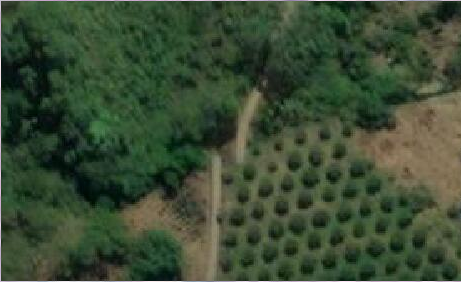I am a new mapper and am map a square"tile?" this week as an assignment for my GIST class. [Please use the MAXAR premium imagery for the location. These images are NOT well positioned . You have to make an offset for every tile. In ID editor use shortcut B (Background), go down submenu adjust offset. Take the following steps: use shortcut B (background) and select BING image (this is problabl already selected). select a clear object (a large building) on the BING image. Draw the building as good as possible. change the image from BING to Maxar premium. go down the background submenu. Then you can change the offset by using the arrows or type in a offset. The selected object (the large building) has to be placed exactly above the that object in the Maxar image. Task] asked 01 Nov '19, 18:55 cptniemo |
2 Answers:
For best accuracy you need several GPX traces of the area ideally recorded over several days to eliminate errors. Display all of these and drag the image into alignment with the average of the traces before mapping from any images. More information can be found here https://wiki.openstreetmap.org/wiki/Using_Imagery edt in response to question re gps/gpx A GPX file can only be recorded by surveying the area and recording your position with a GPS device, GPS equip smart phone or GPS dongle. A GPX trace should be accurate to +-5 metres and if you have several for the same area you can check and if required fix the image position. OSM as a database of traces. see https://wiki.openstreetmap.org/wiki/Upload_GPS_tracks and https://www.openstreetmap.org/traces You will be able to learn more by spending time reading the OSM WIKI answered 01 Nov '19, 22:35 andy mackey edited 04 Nov '19, 19:58 |
Good quality images are usually made from planes and not satellites. The plane has a GPS, so knows its position. The image is usually taken straight down, so the center point of each picture is also rather good. But the images need to be stitched together: two images next to each other need to be skewed and stretched so the edges fit. On flat ground, that's pretty simple. The camera has a certain viewing angle, so if you know the plane's altitude, you can calculate the ground distances from it. But whenever you are in mountainous terrain, this calculation becomes a lot harder (a high point will appear closer to the image center than a low point). This gives the interesting result that higher-quality photos (which are usually taken by flying lower) are harder to align as the terrain effects are more severe. And lower-quality photos are taken from high and are usually better to align. In the given example, it appears that Bing will be the lower resolution source, but have higher accuracy. And Maxar imagery will be higher resolution and lower accuracy. Note that this is not universally true. Most of these imagery providers buy pre-made sets of imagery, so they are not uniform in quality. And high-resolution imagery can be aligned quite precisely too, when local measurements are used (buildings are measured on the ground, and used as reference points). But this is a lot more costly to do, and probably only worth it in rich countries. Sometimes you can also find the places where the images are stitched together. Like in the example below, the street should clearly be connected.
So in short, you can keep the alignment for a small group of features. But if you pan away, you will need to realign. answered 30 Apr '20, 16:24 Sanderd17 edited 30 Apr '20, 17:02 |


I could not find how to do GPS traces. Maybe I just just find them somewhere.
I am almost brand new at this. only been on OSM a couple hours total.
see edit to my answer
Reading your question again i now realise that you are a remote mapper and therefore can't record traces your self. Someone may have already uploaded some traces in the area and if you enable traces/gpx in your editor you can use those, If that can't be done you will have to take the advice in the note and use Maxor Premium. sorry for my misleading advice. Happy Mapping